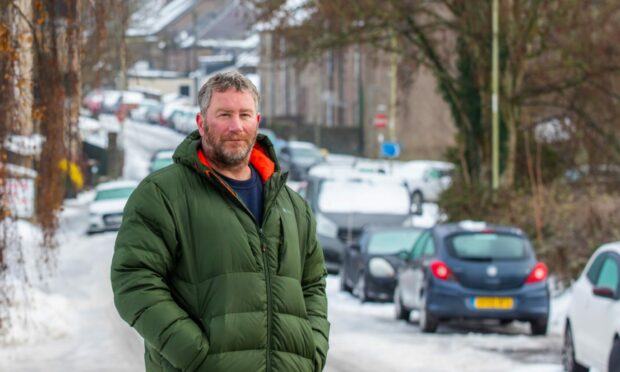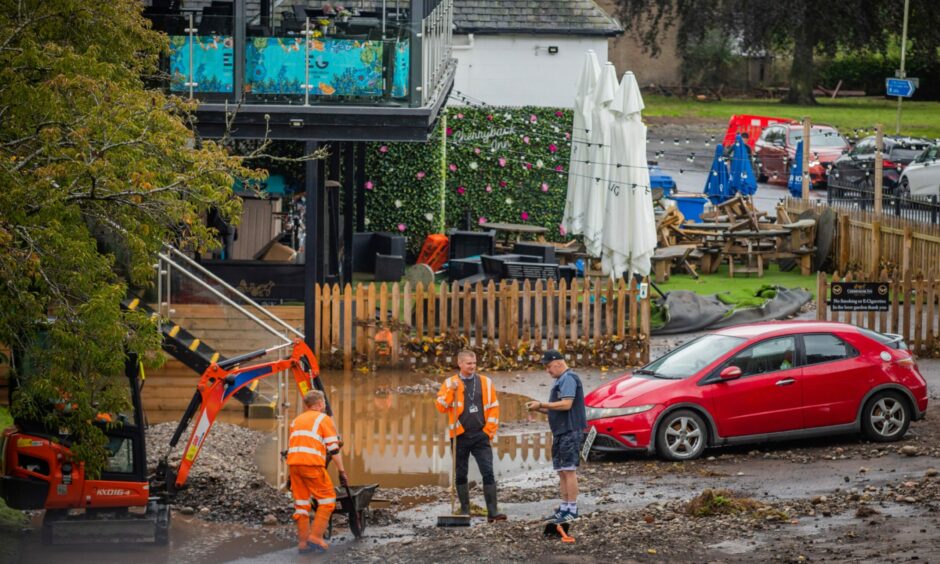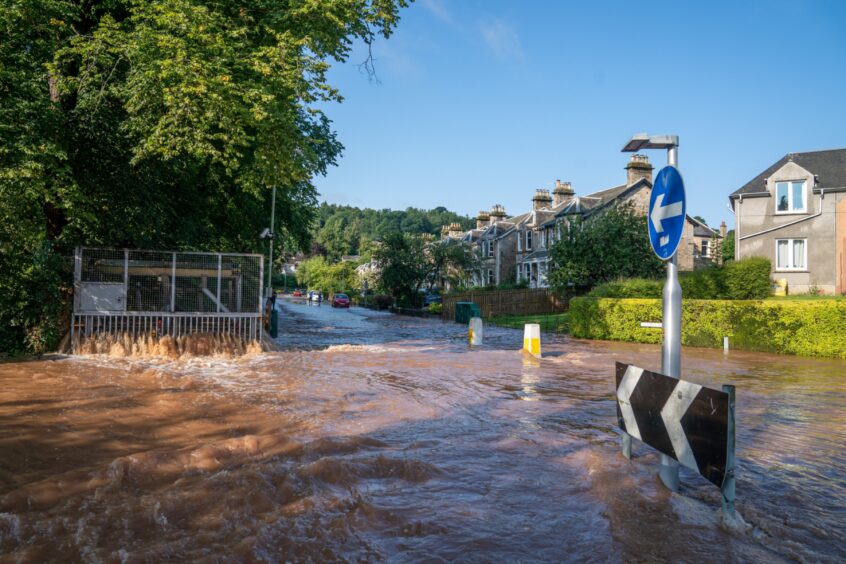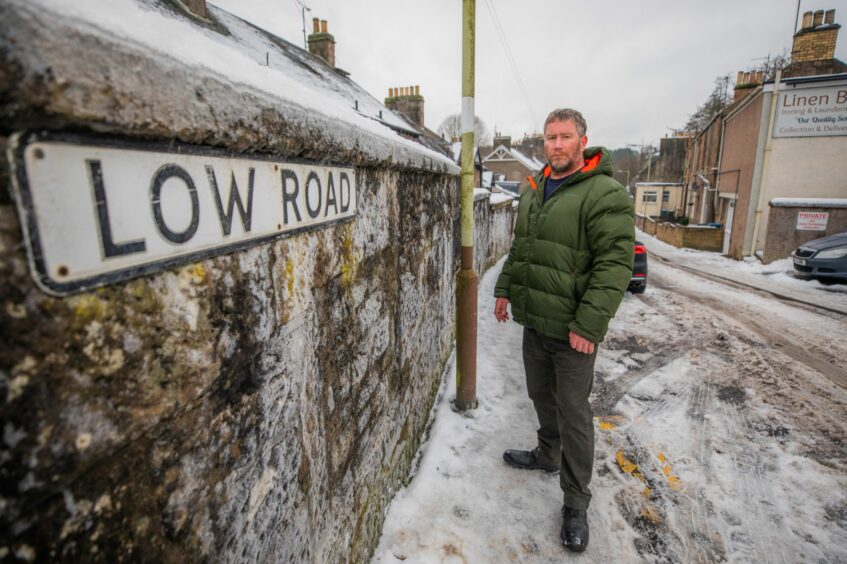Flood-hit Perth residents are reaching the end of their patience as house prices fall and insurance claims rocket.
Some living beside the Craigie Burn have been flooded twice in just over two years.
Mat Austin of the local Flood Action Group says more flooding in 2023 is inevitable.
“It’s not a possibility, it’s a likelihood now.”
And he adds: “Sand bags are not going to cut it.”
But Perth and Kinross Council (PKC) say the responsibility for protecting homes against flooding lies with the householder.
So where does that leave Mat and his neighbours?
Rising insurance and falling house prices
The first of the recent flooding events in Craigie deluged Mat’s basement.
He no longer stores anything there to avoid things getting damaged.
Despite the floods not reaching the living areas in his flat, he says the price of his property has dropped by 10%.
“And our insurance has doubled.
“The council in our opinion need to be held to account to some extent.
“You can say it’s our responsibility to protect our home but how you can protect your home against a waterfall like we’ve seen coming down.”
In September, water cascaded down Glasgow Road, flooding the Cherrybank Inn’s beer garden and car park.
Flooding hit large swathes of Craigie, including Queen Street.
Flood water caused interior damage to around 40 properties, in addition to deluging gardens and outbuildings.
It was the second time properties along the length of the Craigie Burn – which runs from near Low Road to the South Inch – had flooded in just over two years.
In August 2020, what seemed like apocalyptic storms and rainfall following a spell of hot weather further south forced some Craigie residents from their homes.
What residents want to see done in 2023
At the top of Mat’s wish list is for the council to keep culverts clear.
Council bosses maintain that staff inspect the Craigie Burn every six months and carry out clearance and repair works where necessary.
But Mat is not convinced they are not doing enough.
He says in August 2020, he helped clear a culvert that was full of “branches, debris and rubbish”.
And he says the problem persists.
“As soon as we cleared it, the water, surprise surprise, went straight down it. The water level dropped dramatically.
“The council need a more concrete plan to ensure that these are kept clear.”
He says residents also want to see PKC take more responsibility instead of leaving householders to fend for themselves.
“The council are very into buck passing.
“If you’re asking for reasonable help, it’s always ‘it’s not our department’.
“They call it an act of god or a once in 100 years flooding event, but we’ve had that three times in 12 years. We’ve had it twice in the last two years.”
Is overdevelopment the problem?
PKC maintains that “all new development is required to comply with national and local planning policies, the council’s supplementary guidance and to include SUDS (sustainable drainage systems) to manage surface water”.
A spokesperson added: “This effectively means that new development has a neutral impact on flood risk.”
But Mat does not believe SUDS ponds are effective at preventing flooding.
And he is among a number of residents we have spoken to who say new housing developments are adding to the problem.
“It’s quite obvious. You can see where the waterfall is coming from.
“It’s all run-off from the huge housing estate they’ve built.”
He fears householders are “paying the price for reckless development”.
What now?
The council is currently working on the Craigie Burn Flood Study.
Members of the Flood Action Group hope once complete it will lead to investment in the Craigie Burn.
“They certainly need to spend more money on the culverts, especially at Necessity Brae/Glasgow Road junction,” says Mat.
A PKC spokesperson said consulting engineers Amey would continue to work on the Craigie Burn Flood Study and Perth Surface Water Management Plan next year.
“We also continue to maintain the Perth Flood Scheme, clear and maintain watercourses and road drainage systems, raise awareness of flooding and the action that individuals can take, apply local and national planning policies, and provide an emergency response to flood events.
“However, individuals have responsibility to protect their own properties in the first instance.
“We therefore continue to encourage local communities to be proactive in carrying out measures to protect their own properties and strongly advise residents in flood risk areas to maintain their own supply of sandbags, or other property flood protection products, in advance of flooding.”














Conversation